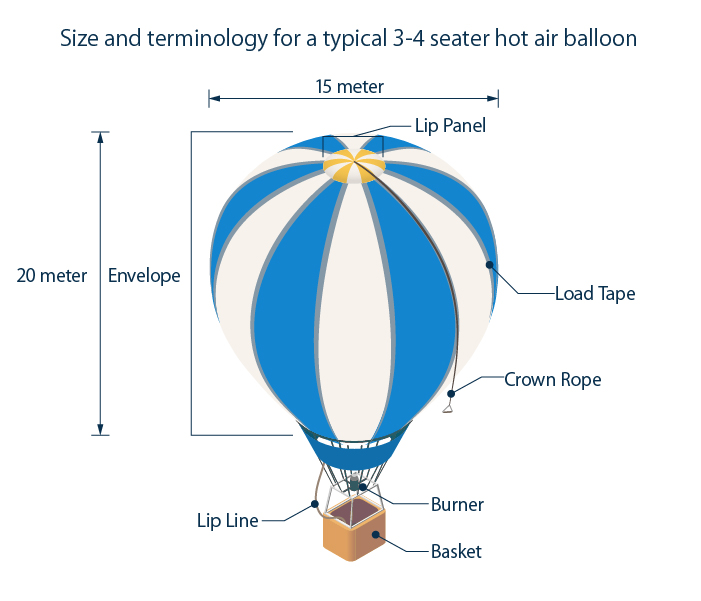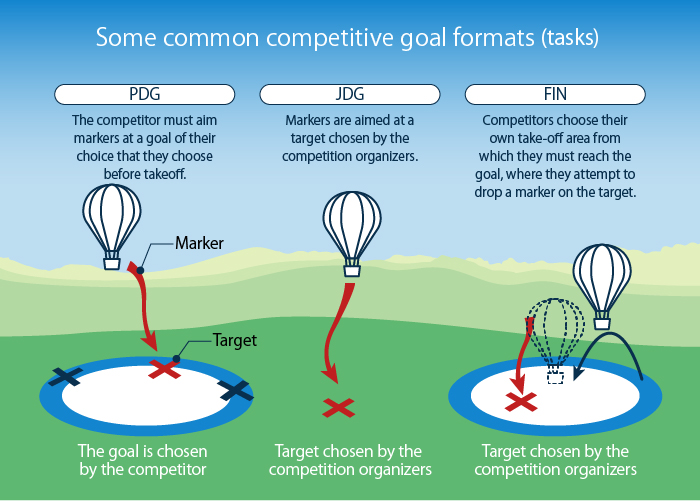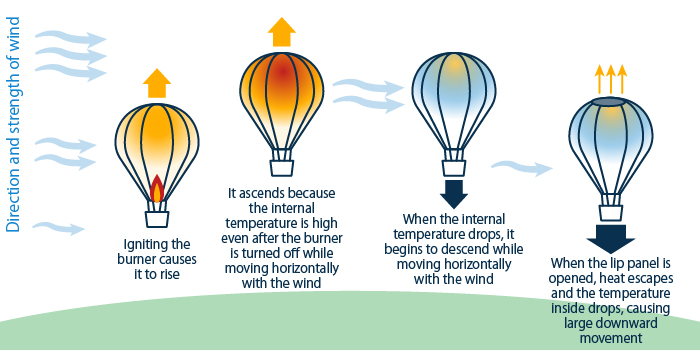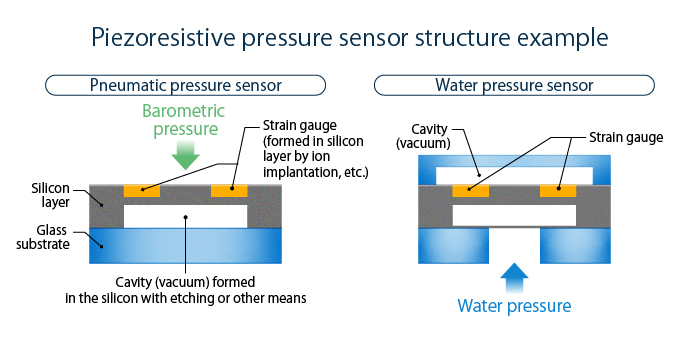Sports Tech@TDK
Essential Technology for Accurate Hot Air Ballooning

Hot air balloons are propelled by heating the air inside a large balloon and utilizing the force of wind currents for propulsion. Hot-air ballooning is now often thought of as a tourist attraction at touristy locations, but competitive sporting events are also often held. These competitions focus on seeing how close one can get the hot-air balloon to a goal. There are approximately 2,000 balloonists in Japan, some of whom have even won international competitions.
- A Competition to See How Close To the Target You Can Drop a Marker

- Maneuver by Adjusting Altitude and Riding the Wind

- Evolution of Barometric Pressure Sensors

- Miniature Pressure Sensor Using Piezoresistive Effect

- Pressure Sensors in a Wide Variety of Products

- TDK's SmartPressure™ Series of Barometric Pressure Sensors

A Competition to See How Close To the Target You Can Drop a Marker
Some hot-air balloon competitions consist of contestants who race to see who can arrive at the designated destination first. However, most competitions are more about seeing how close they can get to a given goal when piloting their hot-air balloon. In most formats a marker (a small bag of sand) is dropped from the air aimed at the finish line, the distance between the marker and the goal is then measured and standings are determined based on the order of proximity to the goal.The most common size of a hot.air balloon is a 3- to 4-seater that is approximately 20 meters tall and 15 meters in diameter. It can be generally classified into three parts: the envelope, the burner and the basket, in addition to the ropes and panels necessary for maneuvering.

The guidelines for when a competitor gets into the basket and drops a marker on a target are called “tasks.” There are 20 different types of tasks, the most common of which are listed below.
・PDG:Competitors drop markers at a “goal” they choose before takeoff
・JDG:Competitors drop markers at a “target” determined by the competition organizers
・FIN:Competitors choose their own takeoff spot and then must drop a marker at the goal or target

Maneuver by Adjusting Altitude and Riding the Wind
So how do hot air balloons maneuver toward their destination? Hot-air balloons have no engines, propellers, or wings like airplanes nor do they have the ability to propel themselves or change direction. Hot-air balloon pilots ride the wind in the direction they want to go by reading the direction and strength of the wind at different altitudes and adjusting the altitude of the hot air balloon in order to ride those currents. Altitude is raised by heating the air inside the balloon with a burner, and lowered by allowing any heated air inside to escape. This is how altitude is controlled, by adjusting the temperature inside the balloon.

Since it is necessary to know about the surrounding conditions, hot air balloons are equipped with an array of instruments such as altimeters, ascent/descent gauges, balloon-cover thermometers and GPS.The altimeter indicates the current flight altitude, while the ascent/descent indicator shows whether the balloon is ascending or descending and the speed at which it is moving. The balloon-cover thermometer is a sensor attached to the top of the balloon that measures the balloon's temperature. GPS receives radio signals from satellites to determine the latitude and longitude and display the balloon's current position.
Of these instruments, the altimeter is the most important piece of equipment for finding and riding the desired winds. The key component of the altimeter is the barometric pressure sensor. By measuring the atmospheric pressure, which changes with altitude, the accurate altitude of the balloon can be calculated.
Evolution of Barometric Pressure Sensors
Barometric pressure sensors, which can measure the atmospheric pressure that changes with altitude, have a long history. It is said that the origin of the barometric pressure sensor was a mercury barometer made by Italian physicist Torricelli in 1643, which contained mercury in a glass tube. Incidentally, a torr, a unit of pressure still used today, is named after Torricelli.
With the invention of the barometer, it was learned that atmospheric pressure changes daily. It was also learned that atmospheric pressure correlates with weather conditions, such as an increase in atmospheric pressure on sunny days and a decrease in atmospheric pressure on rainy days. When voyages from Europe to the Pacific and Indian Oceans became popular, barometers became indispensable tools for sailors to predict stormy weather and avoid dangers such as capsizing.
Miniature Pressure Sensor Using Piezoresistive Effect
Currently, the most widely used barometric pressure sensors are semiconductor pressure sensors that utilize the piezoresistive effect. It is based on the phenomenon that, when pressure is applied to a certain type of semiconductor, its electrical resistance changes. Piezo is a Greek word meaning to push or compress.
Many of the pressure sensors used in smartphones, altimeters in wristwatches, and diver's watches that display water depth are of this piezoresistive type. The major difference from conventional pressure sensors is that a large number of sensor elements are formed on a wafer to make a chip, similar to ICs and other types of sensors. The manufacturing method and the principle of the sensor are briefly summarized here.

First, a layer of silicon with small cavities etched into it is placed on top of a glass substrate. This cavity serves as a diaphragm that expands and contracts with changes in atmospheric pressure. Next, a piezoresistive part (or rather a strain gauge) is formed on the thin silicon surface that is the roof of the cavity. The piezoresistive pressure sensor is also called a diffusion resistive pressure sensor because the semiconductor process technology that injects (diffuses) impurity ions into the silicon layer is the mainstream method for this process. When the thin silicon surface above the cavity (diaphragm) deflects due to changes in atmospheric pressure, the electrical resistance changes due to the piezo-resistance effect of the strain gauge. This is processed and amplified by an electronic circuit to display the pressure.
Pressure Sensors in a Wide Variety of Products
Piezoresistive pressure sensors are applied not only in smartphones and wearable devices, but also in automobiles, factory automation equipment and other home appliances. For example, in air conditioners and vacuum cleaners, air pressure is controlled to achieve energy-saving and efficient operation. They are also used in rice cookers to cook fluffy and tasty rice with fine pressure detection. Barometric pressure sensors are also indispensable for drones that fly freely in the sky to detect altitude. MEMS, which has been attracting attention in recent years, is a technology that integrates sensors, electronic circuits, and actuators on a substrate by applying semiconductor manufacturing technology. In addition to advanced MEMS barometric pressure sensors, TDK offers an extensive lineup of various pressure sensors that can be applied to a wide range of applications.
TDK's SmartPressure™ Series of Barometric Pressure Sensors

Our barometric pressure sensor is made with innovative capacitive MEMS architecture, featuring low power consumption and low noise compared to competitors' products. It has extremely high sensitivity and accuracy, and can detect a difference in height of as little as 5 cm, which is less than the height of a single stair step. It is used in various mobile devices such as smartphones, tablets, wearables, and drones.
TDK is a comprehensive electronic components manufacturer leading the world in magnetic technology






